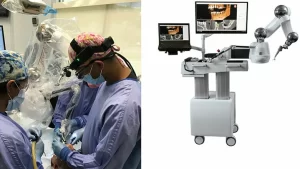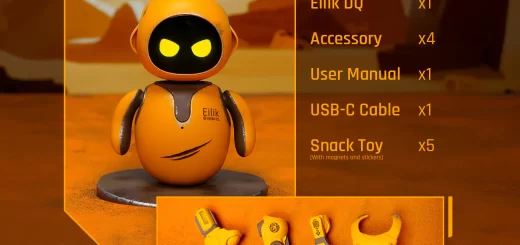Dental Robotics uses, advantages, disadvantages, types and Yomi robot review
Robotics is used in dental medicine, Robots can be used to perform repeated workflows for an indefinite length of time while enhancing the overall quality and quantity of patient care, the latest medical robots are used to perform patient intervention or remote monitoring autonomously. robotic transformation is still facing diverse types of challenges.
Dental robotics
Robots can perform automatic manual tasks programmed by the computer, Robots can clean floors, trim grass, greatly assist in industrial production, they are becoming an integral part of our daily and professional lives, Robots deliver consistently high-performance, economic relevancy and serve as smart assistants and co-workers in many public areas.
Dentistry offers multiple opportunities for robotic automation and assistive technology to enhance the quality of dental care, Robots may relieve human resources for more important tasks, such as interacting with patients or other functionalities requiring high cognitive skills, However, dental robots can help improve treatment precision and outcome.
The use of robots in dental clinics
Robotics will change diagnostics and treatment protocols in dental medicine, Robots can perform repeated workflows for an indefinite length of time while enhancing the overall quality and quantity of patient care, Early robots required a human operator, but robotic systems have advanced over the past decade.
Dentists may experience physical and mental exhaustion after hours of demanding procedures in challenging positions, leading to mistakes in the oral examination, disease diagnosis, and treatment planning, There is a risk of carelessness surrounding daily routine works, such as cleaning of instruments and surfaces in the dental clinic, robotics can reduce errors and enhance the patient care.
Robotics systems can be used in dental implantology, oral and maxillofacial surgery, prosthetic and restorative dentistry, endodontics, periodontics, orthodontics, and oral radiology. Robots in conjunction with 3D navigation can be used for invasive dental procedures such as tooth preparation and autonomous dental implant placement.
Dental robotics advantages
Robotic systems can be used in education. Dental Robotics offers safer and more accurate drilling than traditional dentistry, and it comes with a high acquisition cost. Robotics in dentistry offers a higher quality of care.
Robotic surgery is constantly evolving, and its applications are expanding, Robot-assisted surgery is used for dental implant placement, Robotic dental surgery system has a high degree of autonomy, Dental Robotics can automatically adjust during intraoperative procedures, and it can execute surgical tasks directly on patients without any apparent control by a surgeon.
Robotics in navigational surgery
The use of robotics in dentistry offers advantages over freehand techniques for placing instrumentation, Robotics systems, along with navigational guidance, offer high accuracy and precision in dental treatment as well as streamlined work processes and better workflows.
Implant surgery causes injury due to perforation of the maxillary sinus, inferior border, lingual plate, labial plate, or inferior alveolar canal; nerve injury; tissue necrosis; and dehiscence, The injuries during the implant placement can cause infection and initiate chronic complications within the sinus cavity, the implant failure is also a risk, with approximately 5% to 10% of dental implants failing.
Clinicians can perform more successful implant placement procedures and lower the risk of failure with the assistance of robotics and navigational surgery, By providing the clinician with assistance as well as the freedom to change course during implant surgery, There is a physical guidance system using the haptic robotic technology known as Yomi.
During traditional guided implant surgery, the surgical guide is placed to help the clinician navigate drilling. However, surgical guides may be ill-fitted or seated improperly, causing incorrect angulation while performing surgery, the surgical guide requires a longer drill, so, the patient has to open his mouth very widely.
Yomi advantages
Guided implant surgery is considered to be static, and creates limitations when the clinician needs the ability to change direction during the procedure, Yomi permits these sudden changes during the implant surgery with ease, and Yomi offers an alternative approach in the surgical implant treatment.
In the preoperative phase, Yomi’s software offers imaging of anatomical features such as nerves, sinus cavities, and surrounding teeth and bone to offer a comprehensive overview to the dental provider, After the pre-operative plans have been arranged, the robotic arm and drill are constrained in place, giving the provider complete control over drill position, depth, and angulation.
During the procedure, Yomi uses multisensory feedback to achieve the exact position and angulation in placing the dental implant accordingly, Yomi offers clinical decision support throughout the surgery, as the computerized screen shows anatomy and drill location the entire time.
The robotic arm resists if the surgeon is operating outside the set boundaries of the planned procedure, Not only can Yomi be used pre-and postoperatively and throughout all phases of surgery, this advanced technology uses a minimally invasive flapless approach while offering clear visualization and guidance at all times for the dental provider and faster recovery with less pain for the patient.
Dental robotics disadvantages
Medical/dental applications are very expensive, and robotic systems are complex and require expertise for their proper operation and function, another vital aspect might be the unknown patient acceptance and compliance among dentists, male subjects are more motivated to receive robotic medical therapy as compared to female subjects, Regardless of sex, the motivation to receive such treatment is reduced with the increase in technique invasiveness.
The robotics finds applications to standardize simple end-oral radiographs to analyze the CBCT and compare the bone volumes to match the bone pre-and post-augmentation procedure, The endodontic issues such as perforation, apical foramen stripping, instrumentation beyond the apex, or improper canal preparation can occur as a result of endodontic treatment.
You can download Science online application on Google Play from this link: Science online Apps on Google Play
Computer technology in dentistry (Digital dentistry) uses, types, cons and pros
Robotic Surgery vs. Laparoscopic Surgery, Robot-assisted surgery features, benefits & drawbacks
Surgical robots types, advantages, disadvantages, How is robotic surgery different from traditional
Applications of Artificial intelligence in the medical field & Healthcare




